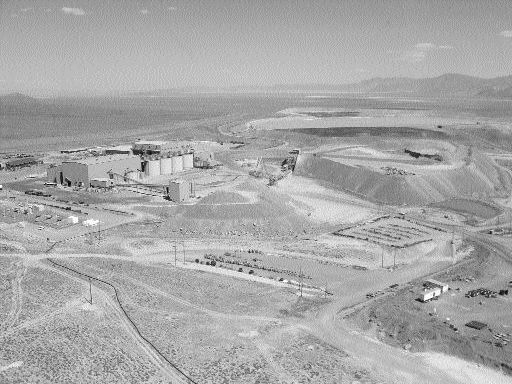At Cortez, 128 km southwest of Elko, Nev., Placer will spend US$245 million developing the adjacent high-grade Cortez Hills and lower-grade Pediment deposits. Partner
Plans call for open-pit mining with conventional equipment, with ore conveyed 16 km for processing at the existing Pipeline mill or leached at a proposed facility nearer the deposits. Gold recovery from the mill is pegged at 88%, with heap leaching expected to yield around 67%.
The scheme includes shallower pit-wall angles and overall pit depth than originally planned, owing to safety concerns. That change means that part of the year-end 2004 reserve has been reclassified as resource.
Proven and probable mineral reserves now amount to 150.2 million tonnes running 1.4 grams gold per tonne, for 6.6 million contained ounces, based on a gold price of US$400 per oz. Measured and indicated resources are pinned at 168.2 million tonnes of 1.1 grams gold, with another 21.3 million tonnes of inferred material grading 2.0 grams gold. The resource estimate employs a gold price of US$450 per oz.
Placer will immediately begin sinking an exploration decline from a nearby existing pit to access the high-grade resources now sitting below the bottom of the planned pit. Placer will put up US$30 million for the 4-year project, which is aimed at allowing closer-spaced drilling on underground targets immediately under the pit and to the west.
Placer says that subject to additional permitting, the decline could be used during any future underground mining or during open-pit development.
“The deep exploration from surface completed to date shows good indications of mineralization suitable for underground extraction,” said Placer’s executive vice-president of strategic development, Geoff Handley, in a statement.
“As a result of the current pit design, an underground operation takes on greater significance. We will look to advance the decline, underground exploration and evaluation as quickly as possible,” he added.
Placer expects to take home 2.8 million oz. gold at average cash costs of US$170 per oz. over the operation’s proposed 7-year mine life.
Placer has submitted its plan of operations for permitting, which is expected to take up to two years, followed by a year of construction.
Meanwhile, Placer and
X-Cal has paid the annual federal claim fees for Reese River, and has committed to at least US$200,000 worth of drilling by the end of September 2006. The two companies plan to ink a definitive deal shortly, which will see the claims transferred to X-Cal, and the junior funding at least another US$200,000 worth of work in 2006.
Thereafter, Placer can earn a 51% stake in the properties by tripling X-Cal expenditures over the subsequent two years. The major can boost its stake to 70% by carrying X-Cal through a feasibility study. If Placer decides not to participate, it will retain a 2% net smelter return royalty.
Back at Mill Creek, Placer can buy the project outright for US$5 million, with X-Cal retaining a 1.5% net smelter return royalty.
Farther afield, in Western Australia, Placer has also given the go-ahead to a US$35-million underground development scheme aimed at converting gold resources in the 250, 60, and 70 zones immediately below the active Wallaby open pit at the Granny Smith mine, 950 km northeast of Perth.
At the end of 2004, Granny Smith’s proven and probable reserves amounted to 8.7 million tonnes averaging 3 grams gold per tonne. Measured and indicated resources stand at 2.9 million tonnes running 2.8 grams gold, with 16.2 million tonnes of inferred material running 5.3 grams.
In 2004, the mine produced 267,267 oz. of gold at a total cost of US$440 per oz. Production for 2005 is projected at 350,000 oz. at US$430 per oz.
Open-pit mining at Wallaby is expected to wrap up in 2006, after which stockpiled ore will be processed until 2007. If underground mining goes ahead, the mine life is expected to extend to 2010.
Looking ahead, Placer says it intends to decide whether to advance its Pueblo Viejo gold-silver project in the Dominican Republic and the 51%-owned Cerro Casale gold-copper porphyry in Chile by the end of the year.
Placer has until the end of the year to raise its US$1.3-billion share of capital for the US$1.65-billion project. Otherwise, it will revert back to Bema owning 51%, and Arizona Star with 49%.
Evaluations of the Donlin Creek refractory gold project in Alaska and Mount Milligan copper-gold deposit in British Columbia continue.
Placer Dome has a 30% stake in Donlin Creek, with joint-venture partner
At last count, Mount Milligan was home to measured and indicated resources totalling 408.5 million tonnes running 0.4 gram gold per tonne plus 0.18% copper.


Be the first to comment on "Placer green-lights Granny, Cortez Hills"